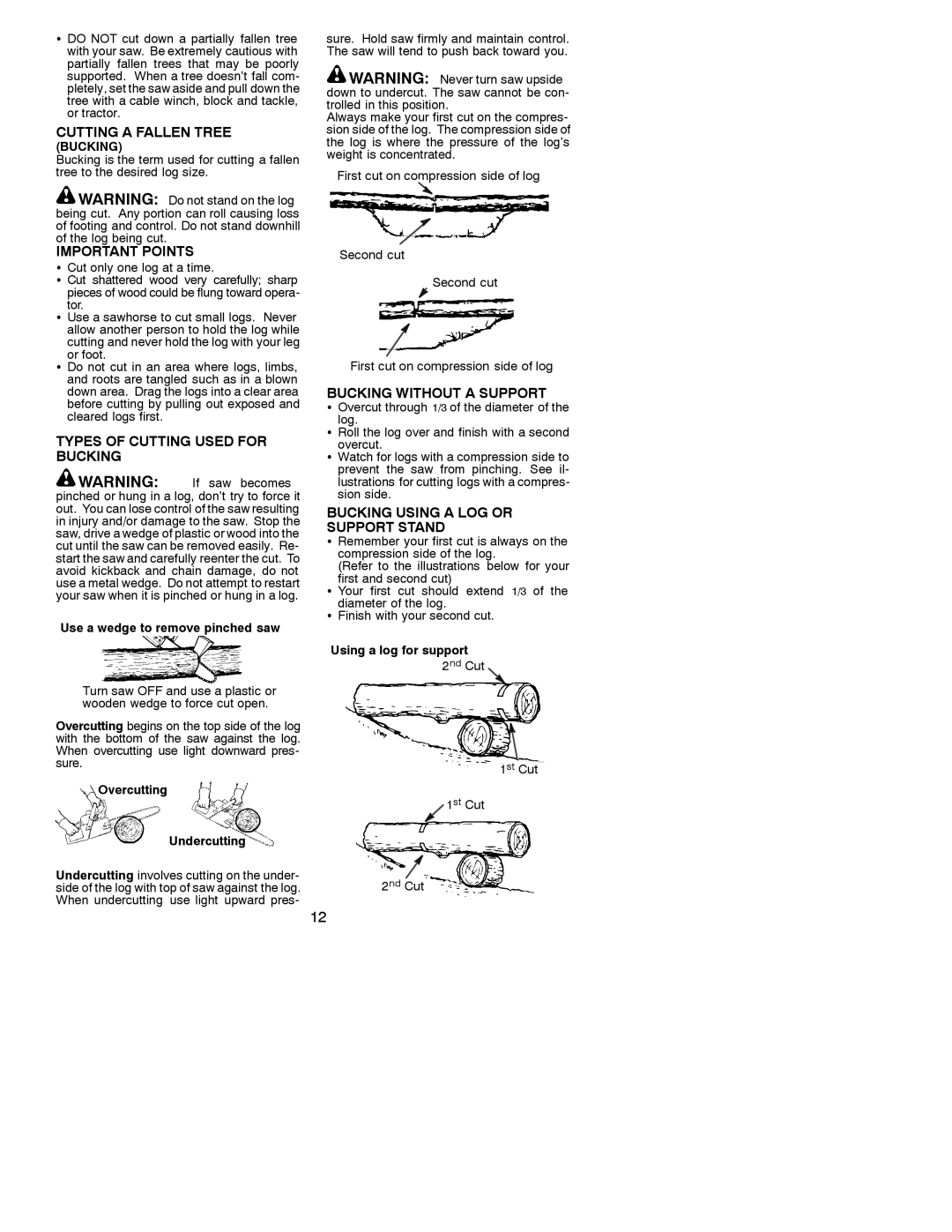2150, 2350, 2375, 2175, 2025 specifications
The Poulan series of chainsaws, including models such as the 2075, 2150, 2050, 2375, and 2025, represents a robust and reliable range suited for both professional and home user needs. Each of these models features unique attributes, making them popular choices in the chainsaw market.The Poulan 2075 is known for its powerful 2-cycle engine, which delivers significant torque and performance. With a bar length ranging from 16 to 20 inches, it is versatile enough for cutting tasks ranging from light pruning to heavy-duty felling. The chainsaw is equipped with an automatic oiler, ensuring that the chain remains lubricated during operation, which enhances chain life and cutting efficiency.
The Poulan 2150 model boasts a lightweight design, making it easy to maneuver, yet it retains ample power for various cutting jobs. This model includes a dual-Trigger safety system that helps prevent accidental starts, enhancing safety for the user. Its Easy Start technology allows for smoother starting with minimal effort.
Moving to the Poulan 2050, this model is often favored for its compact size and balance, which aid in reducing user fatigue. It is particularly effective for homeowners looking to handle routine yard work. Its 20-inch bar combined with a solid cutting speed makes it a reliable choice for trimming branches and cutting firewood. The 2050 also features an easily accessible air filter, allowing for convenient maintenance.
The Poulan 2375 is designed for more intensive, commercial-grade tasks with a higher engine power output. This model features a larger fuel tank capacity which means extended operating time between refuels. The inclusion of a vibration dampening system ensures comfort during prolonged use, reducing hand fatigue and increasing precision in cutting.
Lastly, the Poulan 2025 focuses on the essentials for users who desire simplicity without compromising on quality. This model is often used for light duty tasks but is designed to handle occasional tougher jobs as well. Its lightweight construction and easy-start mechanism make it ideal for those new to chainsaw operation.
Overall, the Poulan chainsaw family offers a wide variety of features and technologies that cater to different user needs. With a strong focus on safety, ease of use, and maintenance, these models are designed to provide efficiency and reliability, making them suitable for both occasional users and professionals alike.

